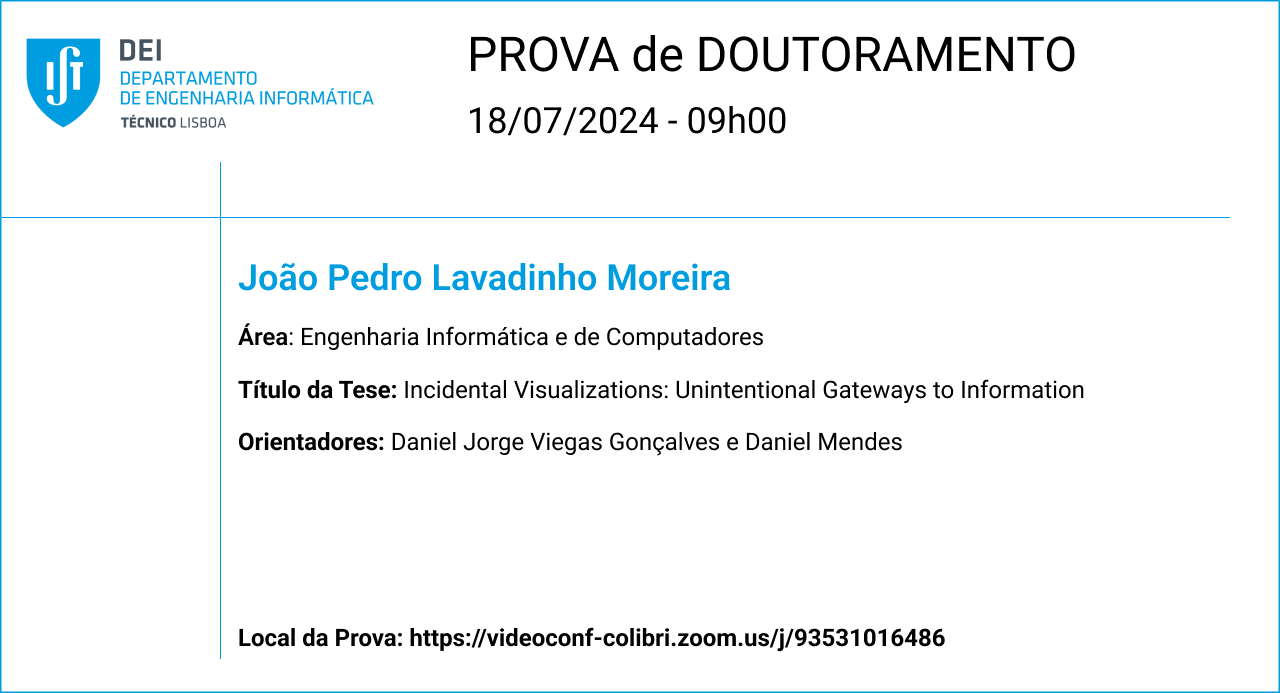Prova de Doutoramento do aluno João Pedro Lavadinho Moreira

Área: Engenharia Informática e de Computadores
Título da Tese: Incidental Visualizations: Unintentional Gateways to Information
Local da Prova: https://videoconf-colibri.zoom.us/j/93531016486
Data: 18/07/2024
Hora: 09h00
Abstract: Amidst the day-to-day activities of individuals, ubiquitous technologies like ambient and glanceable visualizations provide information embedded in the environment, thus allowing people to perceive information at-a-glance and on-the-go. However, these solutions could potentially divert attention from what a person is doing. In our research, we explore a novel method of visualizing data termed 'incidental visualizations' as a solution to present information within one's field of view without the need for conscious searching, thus ensuring sustained focus on the current primary task. We began by examining incidental graphical perception to define the baseline of incidental visualization's design. We conducted two user studies where participants had to interpret specific marks and channels as values. The initial study focused on decoding various marks and channels displayed for 100 milliseconds into specific value ranges, one mark at a time. Subsequently, our second study delved deeper into incidental graphical perception, examining how results varied with up to four marks and exposure times of up to 1000 ms. Both studies indicated the effectiveness of incidental graphical perception. Knowing which marks and channels to use, we then designed an incidental visualization and tested it in another user study, where participants observed the visualization while engaged in a primary task. We measured both task performance and the accuracy of visualization perception. Our findings showcased consistently high levels of task performance and visualization effectiveness, indicating minimal interference from incidental visualizations. Recognizing this minimal impact, our final study focused on varying the complexity factors of the primary task, and we concluded that increasing the complexity of those factors led to worse task performance and visualization accuracy. In conclusion, our findings validate our thesis: incidental visualizations enable individuals to access information effectively while allowing them to be engaged in primary tasks without the need for conscious searching.
